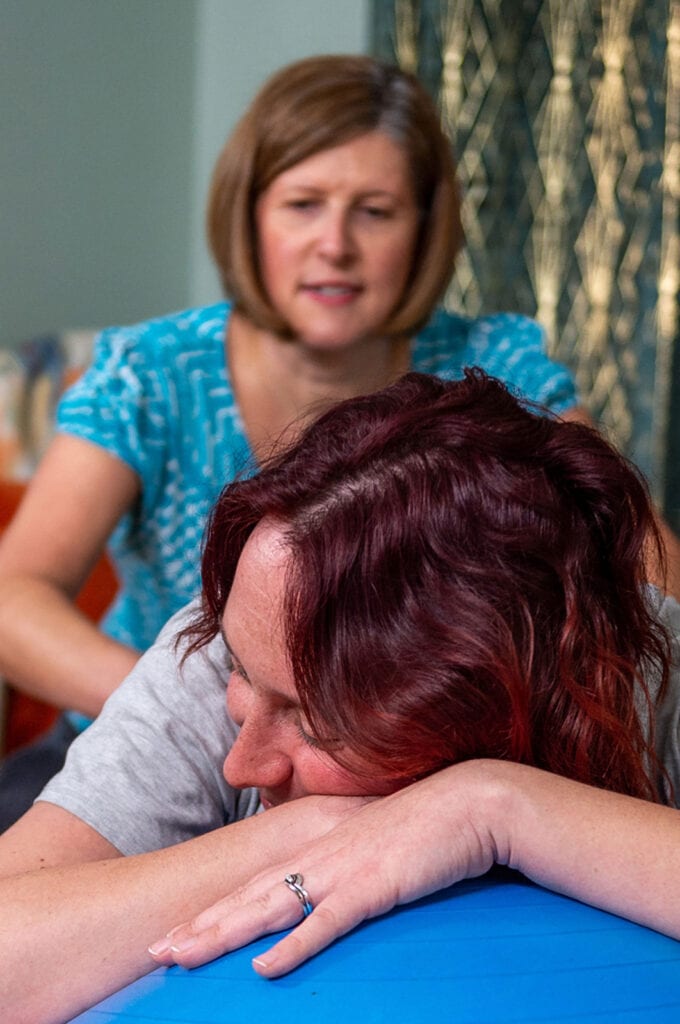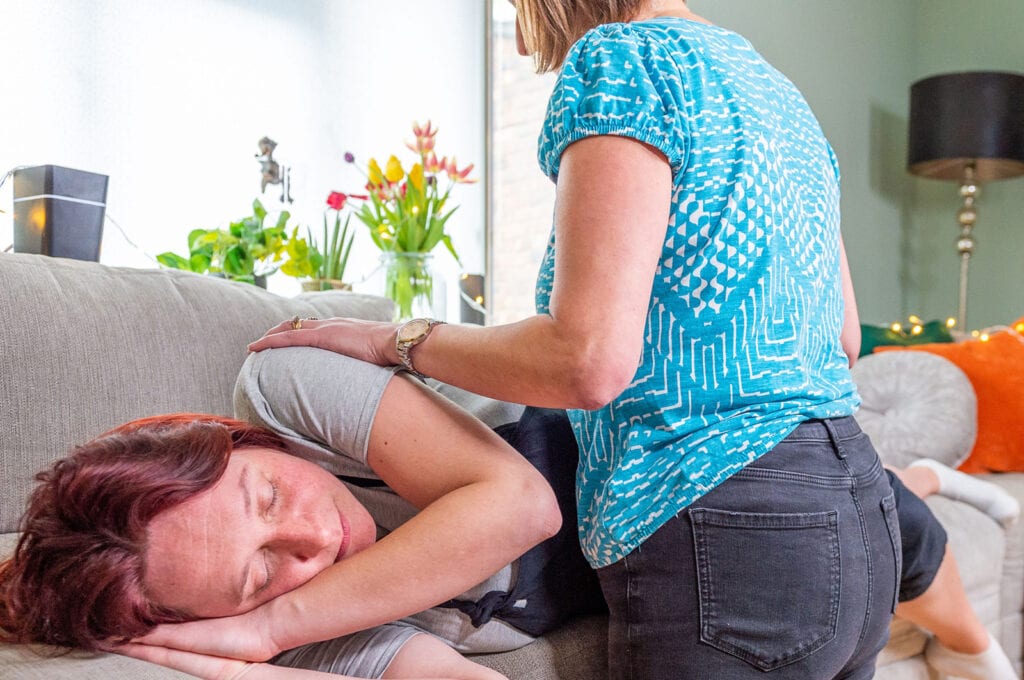Biomechanics for Birth and Rebozo are simple movements and positions that support the anatomy and physiology of birth to help prevent labour dystocia, this being the slow dilation of the cervix, slow descent of the baby and stalling in the latent or active phase of labour.
An antenatal biomechanics exercise programme encourages your baby to be in their optimal position for birth and can reduce the need for induction of labour.
The positions and exercise can also help rotate a baby who is in the breech position, although breech birth is just a variation of the norm.
What can cause the labour dystocia?
- Malposition of the baby’s head (asynclitic) where the baby’s head is turned towards the shoulder instead of chin to chest.
- The baby being in an unfavourable position (back-to-back) although some babies are happy in this position and women birth naturally with their babies back-to-back.
- If the baby is not within the pelvic brim (engaged).
Why may this cause labour to slow, stall or contractions become sporadic?
- If the baby’s head is asynclitic then the smallest part of the baby’s head (the occiput) is not descending through the pelvis and making full contact with the oxytocin receptors in the cervix, this can cause contractions to be irregular, not form a rhythm, stall, or not start.
- If the baby is in a back-to-back position (right or left occiput posterior) although labour will start and progress it can be slow with irregular contractions mostly focused in the buttocks and back.
- If contractions have started (your body does not need a head on a cervix to start labour – many second and subsequent babies do not fully engage until labour has started) but once in active labour the baby may not be in the optimal position to descend into the pelvis.
What can cause a breech presentation?
- You are expecting multiple babies.
- There is too much or too little amniotic fluid.
- The uterus shape has been affected by fibroids or previous scar tissue.
- You have a low-lying placenta (covering part or all of the cervix).
In these instances it is not safe for me to use Biomechanics, Spinning babies methods or Rebozo.
If however your baby has simply decided that they prefer to be bottom (or foot) first and you have no other complication, my programme of exercises and position from Spinning Babies could help rotate your baby into the head down position.




How I can help
Rebozo is an ancient Mexican method using a rebozo scarf to relax and rebalance the soft tissues, ligaments and fascia muscles around the uterus and pelvis by gentle juggling, rocking, and sifting. This encourages more space within the pelvis for the baby to reposition or rotate either in pregnancy or during labour. Doing Rebozo work can encourage labour to start and help avoid induction.

Spinning Babies techniques and Biomechanics for Birth techniques are positions and exercises used during pregnancy to encourage the baby into the pelvis in a favourable position, rotate a back-to back presentation or flip a breech baby. They help release tension from sitting, tight pelvic floor muscles (associated with horse riders, athletes, and dancers) and pelvic injury.
The positions and exercises relax the pelvic, uterine and fascia muscles, increase blood flow and encouraging the uterus, baby, and woman’s body to become more aligned and flexible. On occasions, once the baby has repositioned, a labour which is yet to start (post dates with a ripe cervix) will start, helping women to avoid induction.
During labour they can help rotate a back-to back baby, release an asynclitic head presentation, increase regular contractions, speeding up labour or un-stall a slowed active stage.

The biomechanics methods that I use are:
- Rebozo.
- Abdominal sifting and lift.
- “Shaking the apples” and “the butt juggle” (they are real terms, I promise)!
- Spinning Babies and Biomechanics for Birth techniques.
- Pelvic squeeze.
- Forward leaning inversion.
- Side lying release.
- Standing sacral release.
- Posterior pelvic tilt.
- Abdominal lift and tuck.
- Open knee chest position.
- The lung.
- The dangle.
- The roll over.
- The breech tilt.
Using a Birth Preparation Exercise Routine according to Lennon. R (2023) and Gachon. B & Desseauve. D (2020) can have the following impact.
- Increase the likelihood of spontanious labour before 41 weeks.
- Optimises physiological birth.
- Reduce the need for induction of labour.
- Reduced emergency caesarean rates during induction of labour.
- Optimising the work with the use of a birth ball reduced labour by 179 minutes in stage one and 19 minutes in stage 2 and reduced the need for a caesarean birth.
Get in contact to book a session with me today either at your home or in house.
I offer either a one hour, in person consultation and demonstration + a personalised exercise schedule with instructions + setting up a WhatsAp chat so we can keep in touch and for me to answer any questions you have for £100.00.
Or an online 40 minute session + a personalised exercise schedule with instructions + setting up a WhatsApp chat so we can keep in touch and for me to answer any questions you have for £70.00.